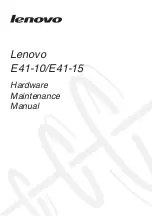
Glossary
232
DVD-ROM (digital versatile [or video] disc read-only memory)
— A
very high-capacity storage medium that uses laser optics for reading
data. Each DVD-ROM can hold as much data as several CD-ROMs.
Compare
CD-ROM.
E
emulation —
A technique in which a device or program imitates another
device or program.
enable
— To turn on a computer option. See also
disable
.
executable file
— A computer program that is ready to run. Application
programs and batch files are examples of executable files. Names of
executable files usually end with a .bat or .exe extension.
extension
— See
file extension
.
external device
— See
device.
F
file
— A collection of related information, saved on disk with a unique
name. A file may be a program, information used by a program, or a
document. See also
document.
file allocation table (FAT)
— The section of a disk that keeps track of
the location of files stored on the disk.
file name
— A set of characters that uniquely identifies a file within a
particular folder. It consists of two parts: the actual name and the file
name extension. See also
file extension
.
file extension
— The three characters following the period (pronounced
“dot”) at the end of a file name. The extension indicates the type of
file. Examples are .exe for program files and .hlp for help files. See
also
file name.
folder
— Also called directory. A container for organizing files saved to
a disk. A folder is symbolized on screen by a graphical image (icon)
of a file folder. A folder can contain files and other folders.
format
— (verb) To prepare a blank disk for use with the computer’s
operating system. Formatting creates a structure on the disk so the
operating system can write information to the disk or read
information from it.
















































